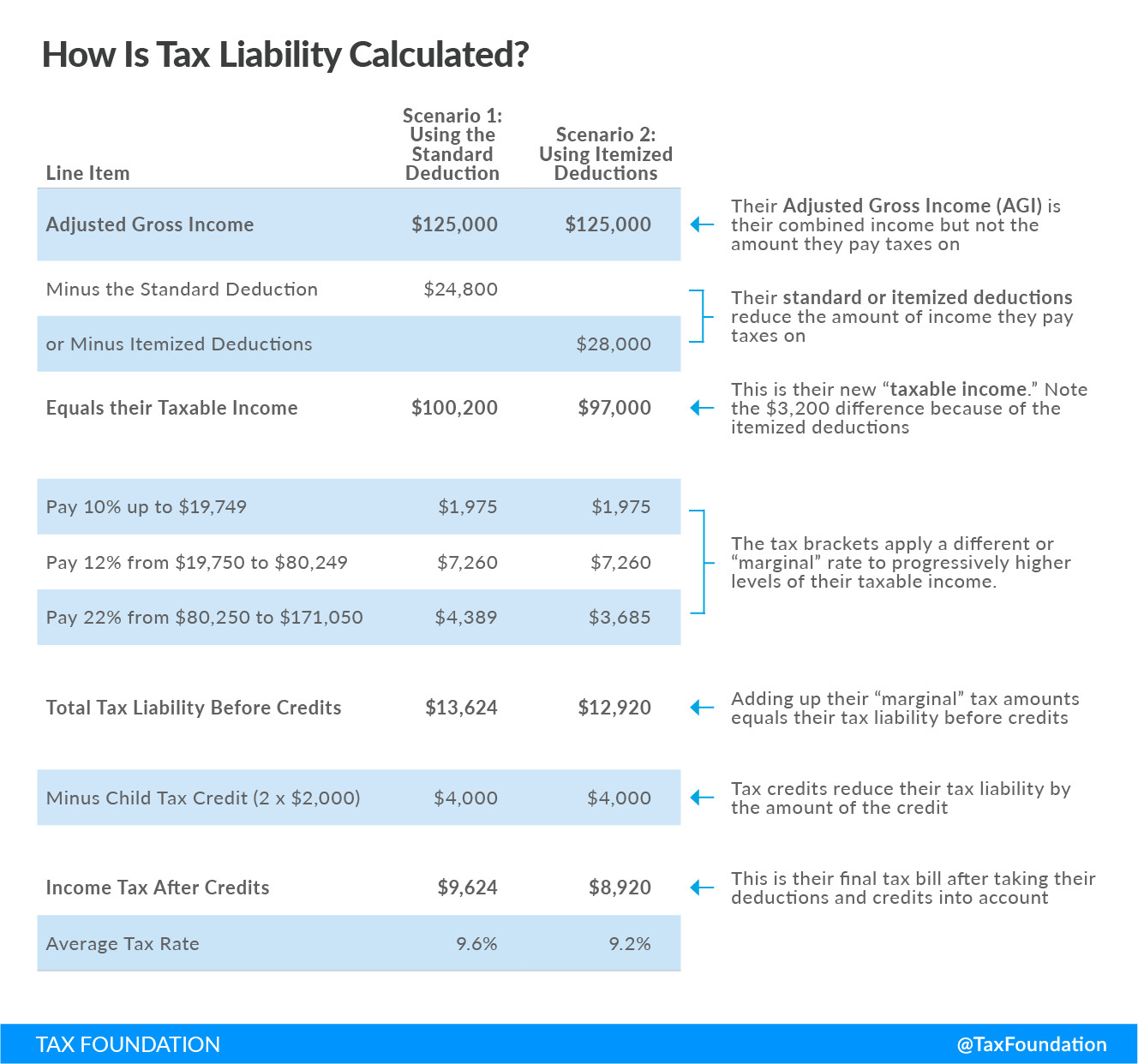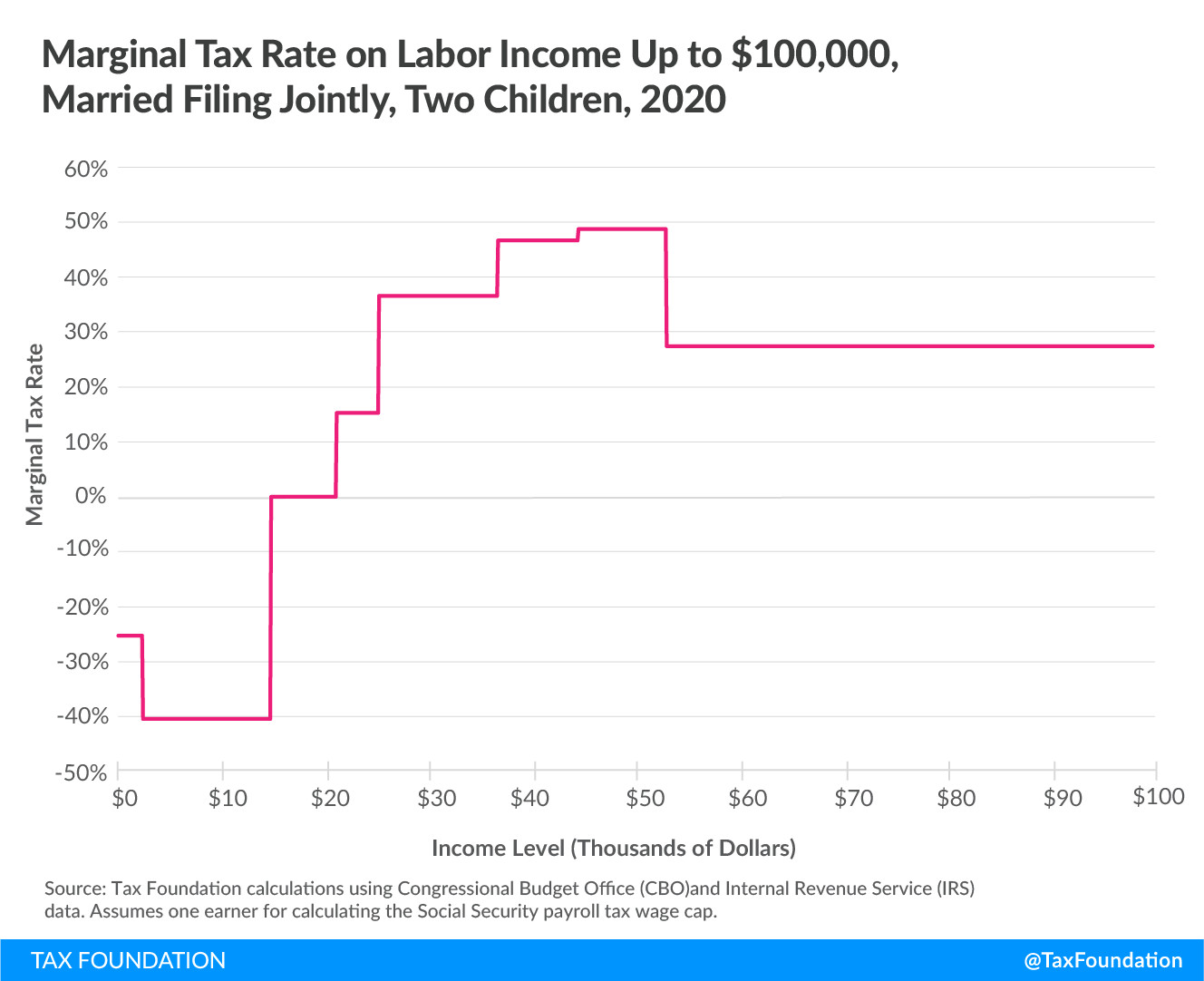Marginal income tax rate is the tax percentage applied to each additional dollar of income you earn, a key concept for understanding your tax obligations and optimizing financial partnerships. At income-partners.net, we help you navigate these complexities and find strategic alliances to boost your income. Understanding the nuances of marginal tax rates empowers you to make informed financial decisions, potentially leading to significant income growth.
Table of Contents
1. What Is Marginal Income Tax Rate?
- Decoding the Definition
- How It Differs from Average Tax Rate
2. How Do Marginal Tax Brackets Work? - Understanding Tax Brackets
- 2024 Federal Income Tax Brackets
- Example Scenario
3. Statutory vs. Effective Marginal Tax Rates - Statutory Marginal Tax Rates Explained
- Effective Marginal Tax Rates: A Comprehensive View
4. Why Is Marginal Income Tax Rate Important? - Financial Planning
- Investment Decisions
- Business Strategies
5. How Does Marginal Tax Rate Affect Investment Income? - Capital Gains Tax
- Dividends
- Tax-Advantaged Accounts
6. Marginal Tax Rates and Business Income - Impact on Small Businesses
- Tax Planning for Businesses
- The Role of Cost Recovery
7. The Impact of Tax Reforms on Marginal Rates - Tax Cuts and Jobs Act (TCJA)
- Potential Future Changes
- Historical Context
8. Strategies to Minimize Your Marginal Tax Rate - Tax Deductions and Credits
- Retirement Contributions
- Healthcare Savings Accounts (HSAs)
9. Finding the Right Financial Partner at Income-Partners.net - Strategic Partnerships
- Maximizing Income Potential
- Building Trustworthy Relationships
10. FAQs About Marginal Income Tax Rates - What is the difference between marginal and average tax rate?
- How is the marginal tax rate calculated?
- What are the current federal income tax brackets?
- How does the marginal tax rate affect investment decisions?
- How can I minimize my marginal tax rate?
- What is the impact of the Tax Cuts and Jobs Act on marginal rates?
- Why is it important to understand my marginal tax rate?
- How do state income taxes affect my overall tax rate?
- What are effective marginal tax rates?
- Where can I find reliable information about tax rates and brackets?
1. What Is Marginal Income Tax Rate?
Marginal income tax rate is the tax rate you pay on each additional dollar of income you earn. It’s crucial for understanding how your tax burden increases as your income rises, which is vital for strategic financial planning and identifying profitable business partnerships at income-partners.net.
Decoding the Definition
The marginal tax rate represents the percentage of tax applied to the next dollar of income you earn. For example, if you’re in the 22% tax bracket, that 22% applies only to the income within that bracket, not your entire income. According to research from the University of Texas at Austin’s McCombs School of Business, understanding this rate can significantly impact your financial strategies, particularly when seeking partnerships to boost earnings.
How It Differs from Average Tax Rate
The average tax rate, on the other hand, is the total tax you pay divided by your total income. This rate provides an overview of your overall tax burden but doesn’t reflect the impact of additional income. Knowing your marginal tax rate is more valuable for making decisions about additional income or investments.
2. How Do Marginal Tax Brackets Work?
Marginal tax brackets are income ranges, each taxed at a specific rate. This system ensures that higher earners pay a higher percentage of their income in taxes. Understanding these brackets helps you anticipate the tax implications of increased earnings and plan accordingly, especially when considering new business ventures or partnerships facilitated by income-partners.net.
Understanding Tax Brackets
Tax brackets are structured so that as your income increases, you move into higher tax brackets. However, you only pay the higher rate on the portion of your income that falls within that bracket. This progressive system is designed to distribute the tax burden more equitably.
2024 Federal Income Tax Brackets
Here are the 2024 federal income tax brackets for single filers:
| Tax Rate | Income Range |
|---|---|
| 10% | $0 to $11,600 |
| 12% | $11,601 to $47,150 |
| 22% | $47,151 to $100,525 |
| 24% | $100,526 to $191,950 |
| 32% | $191,951 to $243,725 |
| 35% | $243,726 to $609,350 |
| 37% | Over $609,350 |
Example Scenario
Let’s say you’re a single filer earning $60,000 per year. Here’s how your taxes would be calculated:
- 10% on income from $0 to $11,600: $11,600 * 0.10 = $1,160
- 12% on income from $11,601 to $47,150: ($47,150 – $11,600) * 0.12 = $4,266
- 22% on income from $47,151 to $60,000: ($60,000 – $47,150) * 0.22 = $2,827
Total tax = $1,160 + $4,266 + $2,827 = $8,253
Your average tax rate is $8,253 / $60,000 = 13.76%. Your marginal tax rate is 22%, the rate applied to your last dollar of income.
3. Statutory vs. Effective Marginal Tax Rates
Understanding the difference between statutory and effective marginal tax rates is essential for accurate financial planning. Statutory rates are the official rates set by law, while effective rates reflect the actual tax you pay after accounting for deductions and credits. At income-partners.net, we emphasize the importance of considering effective rates to make informed decisions about partnerships and income strategies.
Statutory Marginal Tax Rates Explained
Statutory marginal tax rates are the rates listed in the tax code for each income bracket. These rates provide a starting point for understanding your tax obligations but don’t account for individual circumstances.
Effective Marginal Tax Rates: A Comprehensive View
Effective marginal tax rates consider the impact of deductions, credits, and other factors that reduce your taxable income. For instance, tax credits like the Earned Income Tax Credit (EITC) and Child Tax Credit (CTC) can significantly lower your effective tax rate, especially at lower income levels. According to the Tax Foundation, effective rates provide a more accurate picture of your tax burden and can influence decisions about work and investment.
4. Why Is Marginal Income Tax Rate Important?
The marginal income tax rate is important for several reasons, primarily because it affects your financial planning, investment decisions, and business strategies. Knowing this rate can help you optimize your income and make informed choices about new opportunities, including those found through income-partners.net.
Financial Planning
Understanding your marginal tax rate helps you estimate the tax impact of additional income. This is crucial for budgeting, saving, and planning for future expenses.
Investment Decisions
Your marginal tax rate influences the after-tax return on your investments. It helps you decide whether to invest in tax-advantaged accounts or taxable accounts, depending on your financial goals.
Business Strategies
For business owners, the marginal tax rate affects decisions about hiring, expansion, and other strategic initiatives. Knowing the tax implications of increased revenue helps you make informed choices that maximize profitability.
5. How Does Marginal Tax Rate Affect Investment Income?
The marginal tax rate significantly impacts how investment income is taxed, influencing your decisions about where and how to invest. Understanding these implications is crucial for maximizing your returns and strategically planning your financial future, an area where income-partners.net can provide valuable insights and partnership opportunities.
Capital Gains Tax
Capital gains, which are profits from selling assets like stocks or real estate, are taxed differently depending on how long you held the asset. Short-term capital gains (held for one year or less) are taxed at your ordinary income tax rate, meaning your marginal tax rate applies. Long-term capital gains (held for more than one year) are taxed at lower rates, typically 0%, 15%, or 20%, depending on your income.
Dividends
Qualified dividends are taxed at the same rates as long-term capital gains. Non-qualified dividends, also known as ordinary dividends, are taxed at your ordinary income tax rate. Knowing your marginal tax rate helps you estimate the tax liability on dividend income.
Tax-Advantaged Accounts
Investing in tax-advantaged accounts like 401(k)s and IRAs can help you reduce your current and future tax burden. Contributions to traditional 401(k)s and IRAs are tax-deductible, lowering your taxable income and potentially your marginal tax rate. Roth 401(k)s and Roth IRAs don’t offer an upfront deduction, but withdrawals in retirement are tax-free.
 Understanding Tax Basics with Adjusted Gross Income, Average Tax Rate, and Marginal Tax Rate
Understanding Tax Basics with Adjusted Gross Income, Average Tax Rate, and Marginal Tax Rate
6. Marginal Tax Rates and Business Income
Marginal tax rates play a critical role in business decisions, influencing everything from investment strategies to hiring practices. Understanding these rates is particularly important for small business owners looking to optimize their financial strategies and explore partnership opportunities through platforms like income-partners.net.
Impact on Small Businesses
Small businesses often face complex tax situations. The marginal tax rate affects how much of their profits they get to keep, influencing decisions about reinvestment, expansion, and hiring.
Tax Planning for Businesses
Effective tax planning can help businesses minimize their tax liability. Strategies include:
- Deductions: Taking advantage of all eligible deductions, such as business expenses, depreciation, and home office deductions.
- Credits: Utilizing tax credits like the Research and Development (R&D) tax credit and the Work Opportunity Tax Credit (WOTC).
- Entity Structure: Choosing the right business structure (sole proprietorship, partnership, S corporation, C corporation) to optimize tax efficiency.
The Role of Cost Recovery
Cost recovery, such as depreciation, allows businesses to deduct the cost of assets over time. This can significantly reduce taxable income and lower the effective marginal tax rate. The Tax Cuts and Jobs Act (TCJA) enhanced cost recovery options, but some provisions are set to expire, potentially increasing marginal effective tax rates in the future.
7. The Impact of Tax Reforms on Marginal Rates
Tax reforms can significantly alter marginal tax rates, impacting individuals and businesses alike. Staying informed about these changes is crucial for effective financial planning, particularly when exploring partnership opportunities to mitigate potential tax increases, a key focus at income-partners.net.
Tax Cuts and Jobs Act (TCJA)
The Tax Cuts and Jobs Act (TCJA) of 2017 made significant changes to the tax code, including:
- Lowering individual income tax rates
- Increasing the standard deduction
- Eliminating personal and dependent exemptions
- Limiting certain deductions, such as the state and local tax (SALT) deduction
While the TCJA reduced marginal tax rates for many taxpayers, several provisions are set to expire at the end of 2025, which could lead to higher rates in the future.
Potential Future Changes
Future tax reforms could further alter marginal tax rates. Proposed changes often include adjusting income brackets, raising or lowering tax rates, and modifying deductions and credits. Keeping an eye on legislative developments is essential for proactive tax planning.
Historical Context
Marginal tax rates have varied widely throughout U.S. history. During World War II, the top marginal tax rate reached 94%. In the 1980s, it was lowered to 28% before gradually increasing to its current level. Understanding this historical context provides perspective on the ever-changing tax landscape.
8. Strategies to Minimize Your Marginal Tax Rate
Minimizing your marginal tax rate can lead to significant tax savings. Strategies include taking advantage of deductions and credits, maximizing retirement contributions, and utilizing healthcare savings accounts. By strategically managing your finances, you can optimize your tax situation and increase your overall income, a goal supported by the partnership opportunities available at income-partners.net.
Tax Deductions and Credits
Tax deductions reduce your taxable income, while tax credits directly reduce your tax liability. Common deductions include:
- Itemized deductions (e.g., medical expenses, charitable contributions, mortgage interest)
- Student loan interest deduction
- IRA contributions
Common credits include:
- Child Tax Credit
- Earned Income Tax Credit
- Education credits (e.g., American Opportunity Tax Credit, Lifetime Learning Credit)
Retirement Contributions
Contributing to retirement accounts like 401(k)s and IRAs can provide significant tax benefits. Traditional retirement accounts offer a tax deduction in the year of contribution, while Roth accounts provide tax-free withdrawals in retirement.
Healthcare Savings Accounts (HSAs)
Healthcare Savings Accounts (HSAs) offer a triple tax advantage:
- Contributions are tax-deductible
- Earnings grow tax-free
- Withdrawals for qualified medical expenses are tax-free
HSAs can be an excellent way to save for healthcare expenses while reducing your taxable income.
9. Finding the Right Financial Partner at Income-Partners.net
Strategic partnerships can significantly enhance your income potential, making it essential to find the right collaborators. At income-partners.net, we specialize in connecting individuals and businesses to forge mutually beneficial relationships.
Strategic Partnerships
Strategic partnerships involve collaborations that leverage each party’s strengths to achieve common goals. These partnerships can take many forms, such as joint ventures, marketing alliances, or distribution agreements.
Maximizing Income Potential
Effective partnerships can open new revenue streams, reduce costs, and expand market reach. By aligning with the right partners, you can unlock opportunities that would be difficult or impossible to achieve on your own.
Building Trustworthy Relationships
Trust is the foundation of any successful partnership. At income-partners.net, we emphasize the importance of transparency, communication, and mutual respect in building long-lasting relationships. Our platform provides resources and tools to help you find partners who share your values and vision.
Navigating the complexities of marginal tax rates and financial planning can be challenging. At income-partners.net, we offer the resources and connections you need to make informed decisions and maximize your income potential.
 Marginal Tax Rates on Labor Income in the U.S. After the Tax Cuts and Jobs Act
Marginal Tax Rates on Labor Income in the U.S. After the Tax Cuts and Jobs Act
Address: 1 University Station, Austin, TX 78712, United States. Phone: +1 (512) 471-3434. Website: income-partners.net.
10. FAQs About Marginal Income Tax Rates
Understanding marginal income tax rates can be complex. Here are some frequently asked questions to help clarify the concept.
What is the difference between marginal and average tax rate?
The marginal tax rate is the tax rate you pay on the next dollar of income you earn, while the average tax rate is the total tax you pay divided by your total income.
How is the marginal tax rate calculated?
The marginal tax rate is determined by the tax bracket your income falls into. Each bracket has a specific tax rate that applies only to the income within that range.
What are the current federal income tax brackets?
The 2024 federal income tax brackets for single filers are:
- 10%:$0 to $11,600
- 12%:$11,601 to $47,150
- 22%:$47,151 to $100,525
- 24%:$100,526 to $191,950
- 32%:$191,951 to $243,725
- 35%:$243,726 to $609,350
- 37%: Over $609,350
How does the marginal tax rate affect investment decisions?
The marginal tax rate affects the after-tax return on your investments. It influences decisions about whether to invest in tax-advantaged or taxable accounts.
How can I minimize my marginal tax rate?
You can minimize your marginal tax rate by taking advantage of deductions and credits, maximizing retirement contributions, and utilizing healthcare savings accounts.
What is the impact of the Tax Cuts and Jobs Act on marginal rates?
The Tax Cuts and Jobs Act (TCJA) lowered individual income tax rates, increased the standard deduction, and eliminated personal and dependent exemptions. However, many provisions are set to expire at the end of 2025.
Why is it important to understand my marginal tax rate?
Understanding your marginal tax rate helps you estimate the tax impact of additional income, make informed investment decisions, and optimize your financial planning.
How do state income taxes affect my overall tax rate?
State income taxes can add to your overall tax burden. Some states have progressive income tax systems similar to the federal system, while others have flat tax rates.
What are effective marginal tax rates?
Effective marginal tax rates consider the impact of deductions, credits, and other factors that reduce your taxable income. They provide a more accurate picture of your tax burden than statutory rates.
Where can I find reliable information about tax rates and brackets?
Reliable sources of information about tax rates and brackets include the IRS website, the Tax Foundation, and reputable financial news outlets.
We encourage you to explore income-partners.net to discover partnership opportunities that align with your financial goals and help you navigate the complexities of income taxation.
